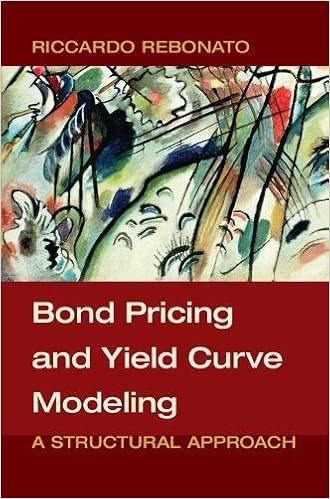Kilian and Lutkepohl's Structural Vector Autoregressive Analysis is now out. The back-cover blurbs below are not hyperbole. Indeed Harald Uhlig's is an understatement in certain respects -- to his list of important modern topics covered I would certainly add the "external instrument" approach. For more on that, beyond K&L, which went to press some time ago, see Stock and Watson's masterful 2018 external-instrument survey and extension, just now released as an NBER working paper. (Ungated K&L draft here; ungated S&W draft here.)
Monday, January 29, 2018
Sunday, January 21, 2018
Averaging for Prediction in Econometrics and ML
Random thought. At the risk of belaboring the obvious, it's interesting to heighten collective awareness by thinking about the many appearances of averaging in forecasting, particularly in forecast combination. Some averages are weighted, and some are not. Most are linear, some are not.
- The "equal weights puzzle" in forecast combination
- Random forests, and ensemble averaging algorithms more generally
- Bootstrap aggregation ("bagging")
- Boosting
- Best subset averaging
- Survey averages
- k-nearest-neighbor forecasts
- Amisano-Geweke equally-weighted prediction pools
- "1/N" portfolios
- Bayesian model averaging
- Bates-Granger-Ramanathan frequentist model averaging
- Any forecasts extracted from markets (the ultimate information aggregator), ranging from "standard" markets (e.g., volatility forecasts extracted from options prices, interest rate forecasts extracted from the current yield curve, etc.), to explicit so-called "prediction markets" (e.g., sports betting markets).
Sunday, January 14, 2018
Comparing Interval Forecasts
Here's a new one, "On the Comparison of Interval Forecasts".
You'd think that interval forecast evaluation would be easy. After all, point forecast evaluation is (more or less) well understood and easy, and density forecast evaluation is (more or less) well understood and easy, and interval forecasts seem somewhere in between, so by some sort of continuity argument you'd think that their evaluation would also be well understood and easy. But no. In fact it's quite difficult, maybe impossible...
You'd think that interval forecast evaluation would be easy. After all, point forecast evaluation is (more or less) well understood and easy, and density forecast evaluation is (more or less) well understood and easy, and interval forecasts seem somewhere in between, so by some sort of continuity argument you'd think that their evaluation would also be well understood and easy. But no. In fact it's quite difficult, maybe impossible...
Monday, January 8, 2018
Yield-Curve Modeling

Happy New Year to all!
Riccardo Rebonato's Bond Pricing and Yield-Curve Modeling: A Structural Approach will soon appear from Cambridge University Press. It's very well done -- a fine blend of theory, empirics, market sense, and good prose. And not least, endearing humility, well-captured by a memorable sentence from the acknowledgements: "My eight-year-old son has forgiven me, I hope, for not playing with him as much as I would have otherwise; perhaps he has been so understanding because he has had a chance to build a few thousand paper planes with the earlier drafts of this book."
TOC below. Pre-order here.
Contents
Acknowledgements page ix
Symbols and Abbreviations xi
Part I The Foundations
1 What This Book Is About 3
2 Definitions, Notation and a Few Mathematical Results 24
3 Links among Models, Monetary Policy and the Macroeconomy 49
4 Bonds: Their Risks and Their Compensations 63
5 The Risk Factors in Action 81
6 Principal Components: Theory 98
7 Principal Components: Empirical Results 108
Part II The Building Blocks: A First Look
8 Expectations 137
9 Convexity: A First Look 147
10 A Preview: A First Look at the Vasicek Model 160
Part III The Conditions of No-Arbitrage
11 No-Arbitrage in Discrete Time 185
12 No-Arbitrage in Continuous Time 196
13 No-Arbitrage with State Price Deflators 206
14 No-Arbitrage Conditions for Real Bonds 224
15 The Links with an Economics-Based Description of Rates 241
Part IV Solving the Models
16 Solving Affine Models: The Vasicek Case 263
17 First Extensions 285
18 A General Pricing Framework 299
19 The Shadow Rate: Dealing with a Near-Zero Lower Bound 329
Part V The Value of Convexity
20 The Value of Convexity 351
21 A Model-Independent Approach to Valuing Convexity 371
22 Convexity: Empirical Results 391
Part VI Excess Returns
23 Excess Returns: Setting the Scene 415
24 Risk Premia, the Market Price of Risk and Expected Excess Returns 431
25 Excess Returns: Empirical Results 449
26 Excess Returns: The Recent Literature – I 473
27 Excess Returns: The Recent Literature – II 497
28 Why Is the Slope a Good Predictor? 527
29 The Spanning Problem Revisited 547
Part VII What the Models Tell Us
30 The Doubly Mean-Reverting Vasicek Model 559
31 Real Yields, Nominal Yields and Inflation: The D’Amico–Kim–Wei Model 575
32 From Snapshots to Structural Models: The Diebold–Rudebusch Approach 602
33 Principal Components as State Variables of Affine Models: The PCA Affine Approach 618
34 Generalizations: The Adrian–Crump–Moench Model 663
35 An Affine, Stochastic-Market-Price-of-Risk Model 688
36 Conclusions 714
Bibliography 725
index 000
Subscribe to:
Posts (Atom)

